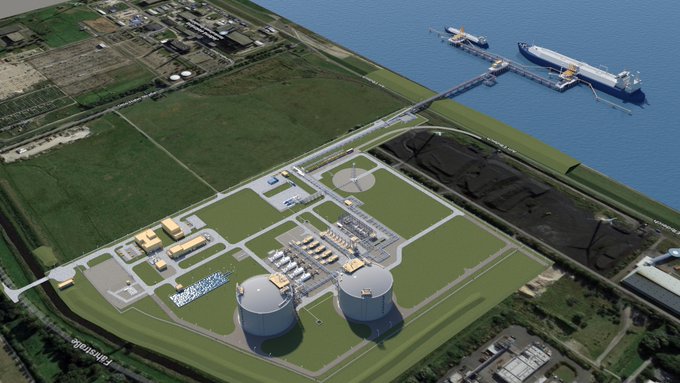German LNG Terminal and Shell Sign Memorandum Of Understanding For LNG Import Via Planned Terminal In Brunsbüttel

Brunsbüttel/Hamburg – In the course of the latest developments in the construction of an energy terminal in Brunsbüttel, a memorandum of understanding (MoU) has now been signed between German LNG Terminal GmbH and Shell for the import of LNG via the terminal. Under the terms of the agreement, Shell will book a substantial part of the terminal's capacity in Brunsbüttel for the import of LNG on a long-term basis. Both sides are currently working on contractually binding agreements on the scope and duration of the partnership as quickly as possible.
"The signed MoU with Shell and the noticeably increased interest of the market show the importance of the import terminal in Brunsbüttel," says Dr. Michael Kleemiß, Managing Director of German LNG Terminal. “We look forward to working with Shell as a further partner in the coming years and will do everything we can to speed up planning and implementation. The terminal will not only contribute to the security of energy supply in Germany, but also to the necessary climate-neutral energy supply in the future.”
Fabian Ziegler, Managing Director of Shell in Germany: “I am delighted about our agreement with German LNG Terminal. It is an important step to ensure short-term supply in Germany and beyond throughout Europe. LNG is the most flexible form of gas supply that can be quickly adapted to changing trade structures. Our diverse and flexible global supply portfolio enables us to efficiently ship and import LNG to where it is needed most. With LNG we contribute to covering energy needs and limiting CO 2-Emissions – a key factor in the energy transition. Natural gas is the cleanest-burning hydrocarbon, and the terminal should also be able to be converted to hydrogen or hydrogen derivatives such as ammonia in the future.”
German LNG Terminal plans to build and operate a combined import and distribution terminal for LNG in Brunsbüttel. The plans are based on an annual throughput capacity of 8 bcm (natural gas). The terminal will consist of two tanks of 165,000 m³ each for intermediate storage of LNG, a jetty with two berthing options for LNG carriers (up to size QMax) and smaller LNG ships, as well as systems for loading and unloading the ships, regasification systems for converting it back into a gaseous aggregate state and the subsequent feeding into the German high-pressure natural gas network as well as systems for loading onto tank trucks, rail tank cars and LNG bunker ships for distribution.
Furthermore, the future import of hydrogen or hydrogen derivatives is taken into account from the start in order to prepare suitable plant components for the potential import of alternative energy

